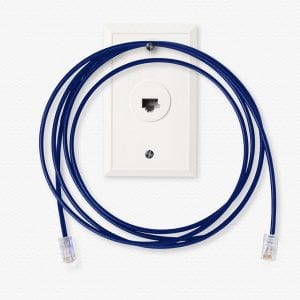The work to continuously improve the speed and quality of our network infrastructure never ends, and the summer is the perfect time for a refresh. As part of our technology repairs and improvements in the lead-up to a new academic year, new wireless access points (APs) have been deployed in several locations on campus. Continue reading New Wireless Access Points Beef Up Signals in Commons
Tag: residential commons
Top 10 Tech Tips for Living on Campus
This is our top 10 tips for getting the most out of your technology while living on campus in the Residential Commons.
Ethernet Switches: The Other Campus Networking
Here we are! The new semester is almost here, and you’re gearing up for move-in. You have all of your furniture, your decor, those hand-me-down bath towels that mom wouldn’t let you leave the house without, and anything else you might need, right?
 On second thought, you remember hearing at AARO that there is one Ethernet port per bed in each residential commons. You also remember that not only do you have a PlayStation to connect, but also your Amazon Fire TV and your desktop computer. Sure, you could connect some of these devices to the PerunaNet wireless network, but you want the absurdly fast performance that only a wired connection can provide. Continue reading Ethernet Switches: The Other Campus Networking
On second thought, you remember hearing at AARO that there is one Ethernet port per bed in each residential commons. You also remember that not only do you have a PlayStation to connect, but also your Amazon Fire TV and your desktop computer. Sure, you could connect some of these devices to the PerunaNet wireless network, but you want the absurdly fast performance that only a wired connection can provide. Continue reading Ethernet Switches: The Other Campus Networking
Nintendos and the Network
![]() As students arrive on campus, they might find some of their favorite gaming devices not being able to get online. Older Nintendo devices, such as the Nintendo Wii, Nintendo DS, & Nintendo3DS, cannot connect to SMU’s wireless network.
As students arrive on campus, they might find some of their favorite gaming devices not being able to get online. Older Nintendo devices, such as the Nintendo Wii, Nintendo DS, & Nintendo3DS, cannot connect to SMU’s wireless network.
OIT’s Networking Specialist Scott Casebere explains.
Wireless networks support multiple data rates (speeds). Your wireless network adapter automatically selects a data rate which will provide you the best possible throughput given your distance from the nearest access point and based on how much interference it is receiving from other devices nearby.
In a large wireless network, when the very low data rates (ie: 1Mbps and 2Mbps) are used by a client, it degrades the performance of all other wireless clients on that same access point. So, in order to provide a better wireless experience to all users and devices, SMU (and any large wireless network provider) must disable these lower data rates to ensure that clients are only using the higher rates.
Unfortunately, the Nintendo Wii, DS & 3DS cannot connect to the network if these lower rates are disabled. It requires the 2Mbps data rate.
Luckily, SMU’s wired network connections allow for these devices to get online. All rooms in the residential commons provide at least one wired jack per bed. These wired connections will even provide faster access and reliability than the wireless connection. While the Wii does not have a built-in wired network adapter, a USB adapter can be purchased from several vendors for less than $20. As for the Nintendo DS, & Nintendo3DS, this option is unfortunately unavailable.

